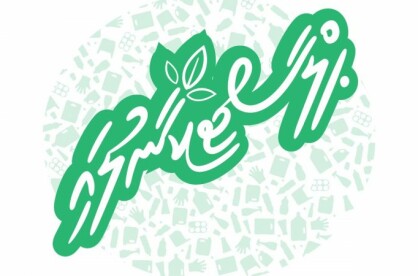The Global Gender Gap Report 2020 by the World Economic Forum has a clear and loud message; none of us will see gender parity in our lifetimes, and nor likely will many of our children. The report further adds that 'it will take another 99.5 years for the world to achieve gender-equal political representation if we continue at our current pace.'
UNDP stresses the requirement of an immediate reversal to this trend – the need for a giant leap for womankind in politics. Here, equality is simply not the solution.
Cultural feminism theory believes that formal equality does not mean substantive equality. Essentially, this means legally treating women the same way as men is not sufficient to address equality. Rather, the law should celebrate the differences between men and women, treating them differently in areas where they are different. Therefore, in some contexts, policies which give special treatment are needed to achieve equality. In this regard, a lot of countries has opted for Affirmative Action. This has been a response to the history of the social system and institutionalized discrimination where women have different experiences than men.
What is Affirmative Action?
Affirmative Action is designed to help minorities and disadvantaged groups in communities, the workplace, and learning institutions. Hence, this policy is often described as positive discrimination.
American Philosopher in moral and political philosophy, Elizabeth S. Anderson defines Affirmative Action as every policy that has a purpose to
- Strive to eliminate barriers in the system and norms towards the group as a result of a history of injustice and inequality,
- Strive to promote an inclusive society as a precondition for democracy, integration and pluralism;
- Seek equality on the basis of classifying identities (race, gender, ethnicity, religion, etc)
In political sense, Affirmative Action is taken to increase the number of women in the parliament, public offices and political parties in order to ensure higher female representation.
History
This term was first used in the United States in Executive Order No. 10925, signed by President John F Kennedy on 6th March 1961. This policy was then used to prevent employers from discriminating against members of disadvantaged groups based on their race, origin or color. By 1967, the list included gender and religion, and the policy aimed to promote anti-discrimination and equal opportunities for people who were previously oppressed, exploited, and exposed to discrimination.
Affirmative Action in politics
The most prominent Affirmative Action policy executed is the use of quotas with the aim to increase female political participation, both at elections and in senior posts within government through;
- National Legislation to influence the result of an election; namely to guarantee that a certain number or percentage of seats are given to women; and
- By Political Parties to affect candidature; through ensuring that a specified number of candidates are women
Criticisms
Affirmative Action has achieved noticeable results, nevertheless, the use of quotas remains controversial.
- Reverse discrimination: this policy has often been criticised to be discriminatory against talented individuals who may not be given equal opportunities simply because they are not part of a minority group, thus, defeating its own fundamentals.
- Tokenism: if individual competence and political commitment is lacking in the selection process and simply focuses on ensuring a certain number of women are represented in parliament – this means it is merely tokenism
- Lack of meritocracy: by imposing Affirmative Action, it may be discouraging meritocracy in the election/ selection process
- Superiority complex: a hierarchy is between those who were elected without the help of quotas being superior to those who did use quotas. This reinforces the already disadvantaged place women hold in public life.
- Demeaning true achievement: achievements by individuals from minority groups and other disadvantaged groups may be considered a result of Affirmative Action rather than their own hard work, which can be demeaning to their true level of effort and confidence in their abilities.
Examples and impact
Based on the research of Rosabeth Moss Kanter (1977) and Dahlerup (1988) work The United Nations Division for the Advancement of Women (UN-DAW) states that women’s interests will start to be taken into public account when there are 30% women in the parliament. Further studies prove that the number of female representatives is parallel to the passing of gender sensitive laws. It is shown that developing countries with higher share of women parliamentarians are more likely to pass comprehensive laws on sexual harassment, rape, divorce and domestic violence.
Indonesia
In 2004 Indonesia enforced Affirmative Action in election and political party laws. Records show that since its implementation, there has been an upward trajectory of female representation in the parliament. While starting only at 11.82%, in 2019, the number stands at 20.5%. This is an achievement, albeit not reaching the ideal rate of 30% suggested by UN-DAW. The legal basis for Affirmative Action in Indonesia is written in laws which was ratified from international conventions, especially those that specifically address women’s rights issues.
Uganda
In Uganda, Affirmative Action was established when the National Resistance Movement (NRM) assumed power in 1986. This policy is provided for in Article 32 of the 1995 Constitution of Uganda in favor of the marginalized groups. Currently, the Parliament of Uganda holds 122 Members of Parliament elected on affirmative action positions. These include 122 District Women Representatives, 5 Youth Representatives and 5 Representatives of Persons with disabilities.
Denmark
In 1985 Danish Parliament passed a law stating that all public committees must have a gender-balanced composition. This has resulted in an increase of female representation on public committees, rising from 12% to 37%. In 1991, the Danish Parliament subsequently decided that all government institutions and state bodies should have affirmative action plans
Maldives and Affirmative Action
In 2019, The Parliament passed the Decentralisation Act with provisions to allocate 33% of local council seats for women. This meant in five member councils, two elected councilors must be women while three seats on seven member councils. This was the first time in the country’s history a gender quota was applied to the local council elections.
Democracy Speaks reported that the Maldives ranks last in South Asia for women’s representation, so the April 2021 council elections was making history as Maldivians voted to give 370 seats to women.
In 2020, UNDP Maldives ran skills-building trainings for 108 female candidates contesting for local councils and Women’s Development Committee's from three atolls as part of their women’s political empowerment program. They have also worked towards creating a gender sensitive approach to local planning through revising the planning handbook for local councils, to integrate gender inclusive planning processes in local level planning. Additional work has also been done with political parties to raise women from grassroot levels to decision makers.
Kiyeveni, a learning portal was established by a joint initiative of Local Government Authority, Ministry of Gender, Family and Social Services, Ministry of Youth, Sports and Community Empowerment and UNDP, to provide skills-building opportunities for women across the nation to boost their participation in the political sphere.
Affirmative Action is not a sole saviour
In order to increase female participation in politics, governments should create and foster an environment that help promote women’s interests in political arena. This can be done ways such as through establishing women’s sections in political parties, training women candidates, providing financial assistance, creating a forum for women to lobby and discuss policy and offering political parties incentives for promoting women in politics. These ways have been proven to increase women in political party in countries like Sweden and Ethiopia. This, shall bring a more democratic parliament, where equality starts with the same opportunity for everyone including women.
Next steps
As Maldives work towards achieving the Sustainable Development Goals by 2030, Goal 5 on Gender Equality remains a key focus. Affirmative Action is definitely not the only solution, but it is a good start to level off the playing the field. Affirmative Action not only gives a better chance for women to be heard in politics, but also helps women to climb the socioeconomic ladder and become independent.
With a mere 4.6 percent of female MPs in Maldives, this is way below the global benchmark of 25.6 percent. As we celebrated record number of female Ministers with President’s Solih’s cabinet, the irony is it was only seven out of 19 slots. Only a handful of independent institutions and public companies have women leading.
Therefore, despite its short comings, affirmative action looks like a viable option that needs immediate implementation.







